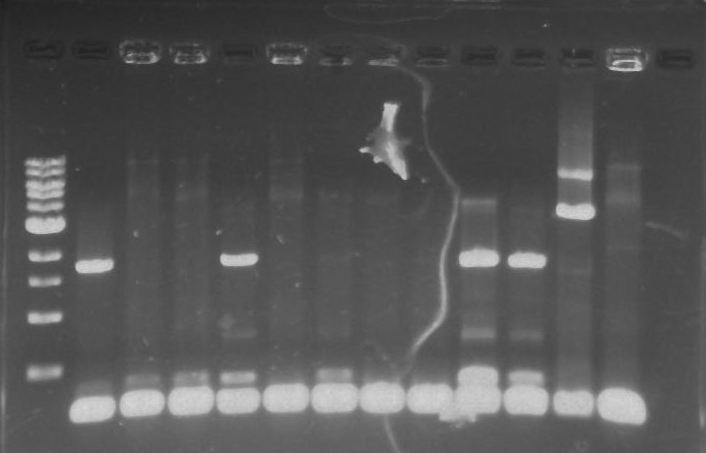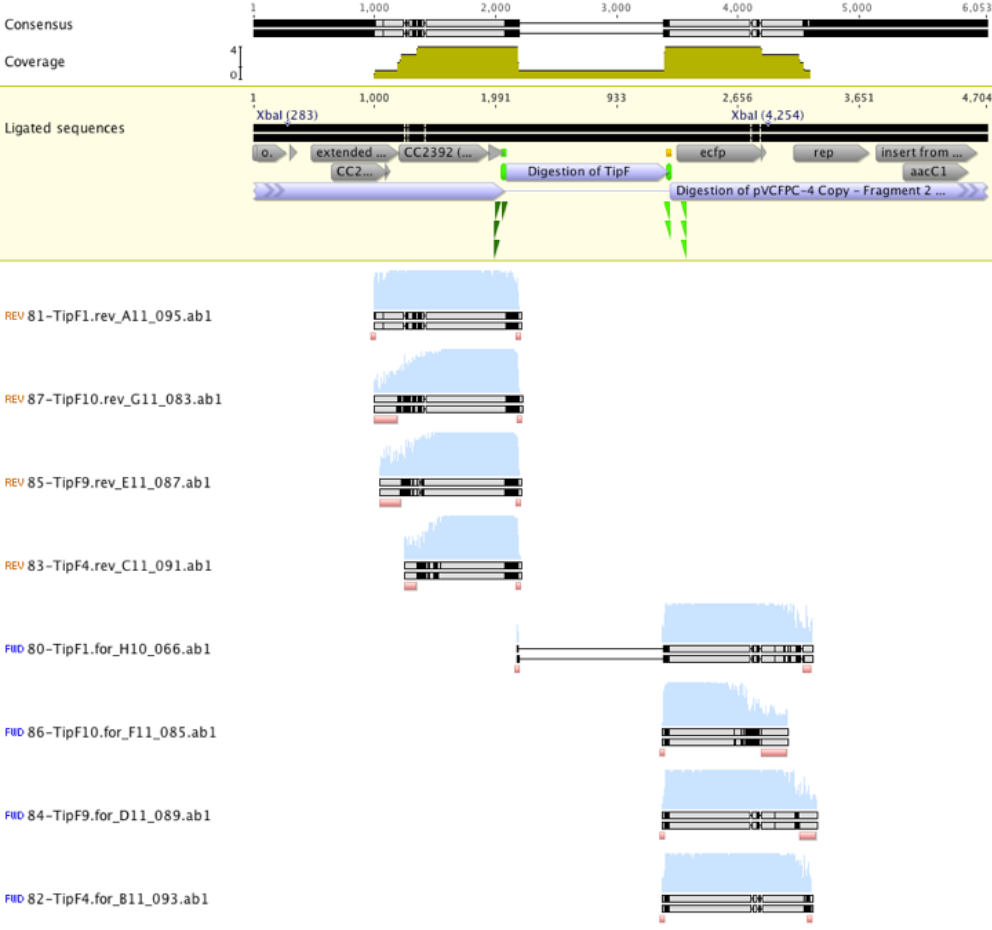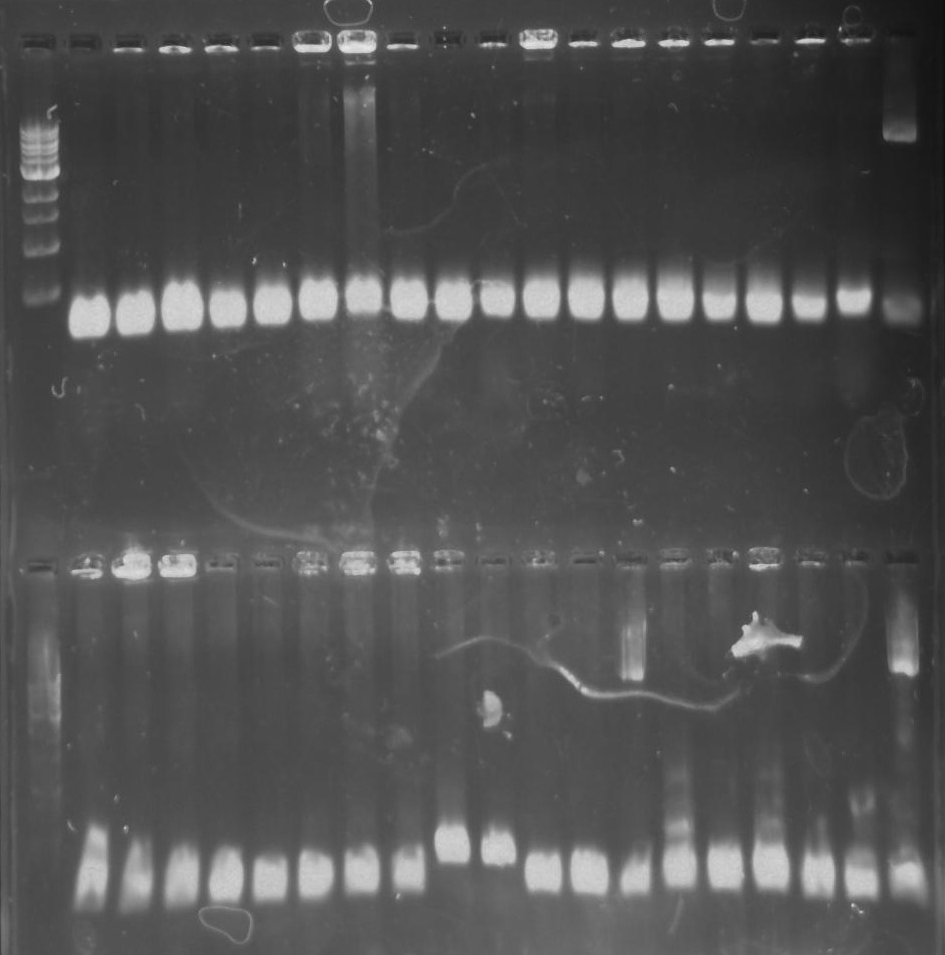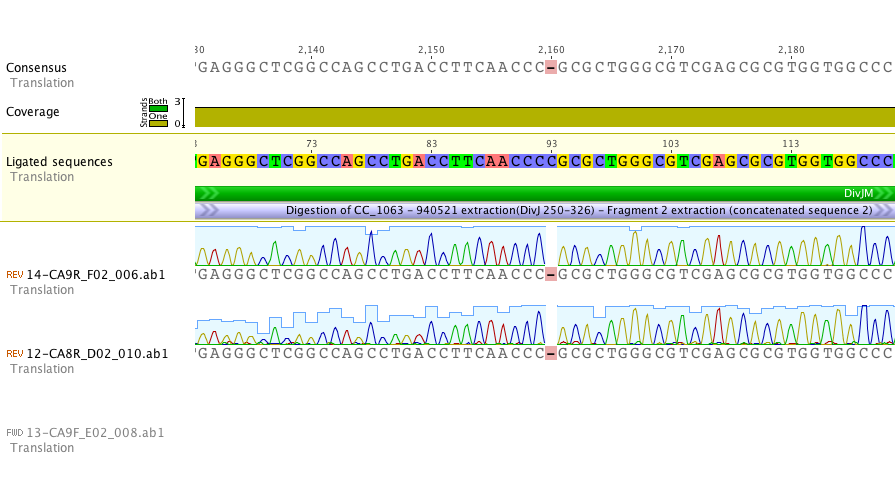Team:UC-Santa Cruz/Project/Polarization
From 2013.igem.org
| Line 12: | Line 12: | ||
</p> | </p> | ||
<p> | <p> | ||
| - | [[File:Seq1.png| | + | [[File:Seq1.png|600px|center]] |
<br\> | <br\> | ||
Figure 1. TipF colony PCR Agarose gel. From left to right ladder, TipF1-TipF10, NegControl, PosControl. | Figure 1. TipF colony PCR Agarose gel. From left to right ladder, TipF1-TipF10, NegControl, PosControl. | ||
| Line 21: | Line 21: | ||
</p> | </p> | ||
<p> | <p> | ||
| - | [[File:Dskjfsd.png| | + | [[File:Dskjfsd.png|600px|center]] |
<br\> | <br\> | ||
Figure 2. TipF sequencing results aligned to the expected ligation product. Reads suggest sequencing of empty vector. | Figure 2. TipF sequencing results aligned to the expected ligation product. Reads suggest sequencing of empty vector. | ||
| Line 31: | Line 31: | ||
</p> | </p> | ||
<p> | <p> | ||
| - | [[File:Legend.png| | + | [[File:Legend.png|600px|center]] |
<br\> | <br\> | ||
Figure 3. Copied from Sciochetti et al., 2002. | Figure 3. Copied from Sciochetti et al., 2002. | ||
| Line 41: | Line 41: | ||
</p> | </p> | ||
<p> | <p> | ||
| - | [[File:Seq2.png| | + | [[File:Seq2.png|600px|center]] |
<br\> | <br\> | ||
Figure 4. Gel 27: From left to right. Top: Ladder, T1, T2, T3, T4, T5, T6, T7, Y8, T9, T10, CD1, CD2, CD3, CD4, CD5, CD6, CD7, NC, PC. Botton: Ladder, CD8, | Figure 4. Gel 27: From left to right. Top: Ladder, T1, T2, T3, T4, T5, T6, T7, Y8, T9, T10, CD1, CD2, CD3, CD4, CD5, CD6, CD7, NC, PC. Botton: Ladder, CD8, | ||
| Line 54: | Line 54: | ||
</p> | </p> | ||
<p> | <p> | ||
| - | [[File:511.png| | + | [[File:511.png|600px|center]] |
<br\> | <br\> | ||
Figure 5. | Figure 5. | ||
</p> | </p> | ||
<p> | <p> | ||
| - | [[File:DivJMDeletion.png| | + | [[File:DivJMDeletion.png|600px|center]] |
<br\> | <br\> | ||
Figure 6. | Figure 6. | ||
</p> | </p> | ||
Revision as of 03:11, 28 September 2013
Polar Tag Results
Isolation of the polar protein tagging genes DivJ, StpX, PflI, and TipF out of a Caulobacter (CB15N) template proved to be more of a challenge than expected. The first round of colony PCR reactions showed several bands at the expected length for the TipF plates. Lanes 1, 4, 9, and 10 showed bright bands at ~1.9 kb (see Figure 1 below)
Figure 1. TipF colony PCR Agarose gel. From left to right ladder, TipF1-TipF10, NegControl, PosControl.
Unfortunately the sequencing results suggested that all reads sequenced were actually empty vector that had been transformed into E.coli (see figure 2 below). A subsequent sequencing of prospective TipF colonies gave similar results.
Figure 2. TipF sequencing results aligned to the expected ligation product. Reads suggest sequencing of empty vector.
After several more similar attempted transformations we decided to build a possible minimal DivJ (DivJM) out of 60 mers (designed using DNA works). We found evidence that suggests a small fragment of DivJ is actually responsible for polar localization of fusion proteins (Sciochetti, 2002)(see figure 3 below).
Figure 3. Copied from Sciochetti et al., 2002.
A ligation reaction and transformation of the recombinant plasmid (with DivJM) into E.coli chemi competent top 10 cells was performed. A colony PCR reaction was performed on the prospective DivJM colonies. Lanes with CA8 and CA9 displayed bright bands at the expected length of ~236 bp (see figure 4 below).
Figure 4. Gel 27: From left to right. Top: Ladder, T1, T2, T3, T4, T5, T6, T7, Y8, T9, T10, CD1, CD2, CD3, CD4, CD5, CD6, CD7, NC, PC. Botton: Ladder, CD8, CA1, CA2, CA3, CA4, CA5, CA6, CA7, CA8, CA9, CA10, NC, PC, YD1, YD2, YD3, YD4, NY, PY. T = TipF, CD = 326 DivJ in pVCPFPC-4. CA = Minimal DivJ in pVCPFPC-4. YD = 326 DivJ in pXYFPC-2. NC = Negative control in pVCPFPC-4, PC = Positive control in pVCPFPC-4, NY = negative control in pXYFPC-2, PY = positive control in pXYFPC-2.
Sequencing of lanes CA8 and CA9 produced reads that suggest a single base deletion was in the DivJM gene (see figure 5 and 6 below). There are several possibilities that would explain the base deletion. An error early on in the synthesis PCR reaction may be to blame for the ambiguous base or there may have been an error in the oligo’s that we had made. We are currently redoing the synthesis and amplification of the DivJM oligo’s.
Figure 5.
Figure 6.
 "
"





